Classic Commentaries and Studies on Revelation Upgrade (30 vols.)
Digital Logos Edition
Overview
Unveil every aspect of Revelation with this collection of nearly 11,000 pages of analysis and commentary. These volumes help readers place Revelation historically, understand its symbolism, and grasp its elusive meaning. A diverse group of biblical scholars offer insightful analysis and exegesis on John’s apocalypse, enabling you to consider Revelation’s challenging questions on your own and to become more familiar with the many ways of interpreting this unique book.
Looking for more classic volumes on Revelation? Check out Classic Commentaries and Studies on Revelation (27 vols.).

- Examines Revelation from historical, exegetical, and theological perspectives
- Presents a wide range of fully developed interpretations
- Contains nearly 11,000 pages of scholarship on Revelation
- Title: Classic Commentaries and Studies on Revelation Upgrade
- Volumes: 30
- Pages: 10,524
- Resource Type: Commentaries & Lectures
- Topic: Revelation
- Commentary on the Revelation by Justin A. Smith
- Sermons upon the Whole Booke of the Revelation by George Giffard
- An Exposition or, a Short, but Full, Plaine, and Perfect Epitome of the Most Choice Commentaries upon the Revelation of Saint John by Hezekiah Holland
- An Exposition of the Whole Book of the Revelation by Hanserd Knollys
- The Book of the Revelation Paraphras’d with Annotations on Each Chapter by Edward Waple
- A Perpetual Commentary on the Revelation of St. John by Charles Daubuz
- A Translation of Mede’s Clavis Apocalyptica by Joseph Mede
- John or the Apocalypse of the New Testament by P. S. Desprez
- A Commentary on the Revelation of St. John by Samuel Garratt
- Apocalyptic Interpretation by James Kelly
- An Enquiry into the Grounds on Which the Prophetic Period of Daniel and St. John Has Been Supposed to Consist of 1,260 Years by S. R. Maitland
- A Dissertation on the Seals and Trumpets of the Apocalypse and the Prophetical Period of Twelve Hundred and Sixty Years by William Cuninghame
- Lectures on the Apocalypse: The Baird Lecture, 1885 by William Milligan
- Thoughts on the Apocalypse by B. W. Newton
- Ten Lectures on the Book of Revelation by William B. Hayden
- Lectures on the Revelation by William J. Reid
- Lectures on the Revelation of St. John by Charles John Vaughan
- Twenty-Four Lectures on the Book of Revelation by James Wells
- Four Short Lectures on the Book of Revelation by Benjamin Douglass
- Studies on the Apocalypse by H. S. L.
- The Apocalypse: An Introductory Study of the Revelation of St. John the Divine by Edward White Benson
- The Apocalypse with Notes and Reflections by Isaac Williams
- The Apocalypse or, Revelation of Saint John, Translated; with Notes, Critical and Explanatory by John Chappel Woodhouse
- History of the Seven Churches of Asia: Their Rise, Progress, and Decline by Thomas Milner
- Outlines of a Commentary on the Book of Revelation by Samuel Davidson
- The Visions of John the Divine: An Exposition, Chapter by Chapter, of the Book of Revelation by William Hoste
- Six Discourses on the Prophecies relating to Antichrist in the Apocalypse of St. John by James Henthorn Todd
- The Apocalypse: A Series of Special Lectures on the Revelation of Jesus Christ, vol. 3 by Joseph A. Seiss
- Kurze Erklärung der Offenbarung Johannis by W. M. L. de Wette
- L’Apocalypse avec une Explication by Jacques Benigne Bossuet
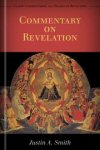
Using the Westcott-Hort New Testament Justin Smith’s commentary provides a phrase by phrase exegetical treatment of the New Testament’s final book. It discusses of Revelation’s provenance and purpose, and interacts with other contributions to nineteenth-century studies on Revelation.
Justin A. Smith (1819–1896) was a historian, biblical scholar, and Baptist minister. He was the editor of Christian Times, and a member of the board of trustees of the University of Chicago and Morgan Park Theological Seminary. He received a doctorate of divinity from Shurtleff College, and wrote several books, including Memoir of Rev. Nathaniel Colver, Studies on Modern Church History, A History of the Baptists in the Western States East of the Mississippi, and The Spirit in the Word.
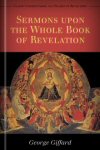
George Giffard’s volume interprets the book of Revelation as a historical document as well as a prophetic text, arguing that the majority of the events described in Revelation occurred in the apostolic era. Giffard treats the book’s prophetic pronouncements as key to the end times and uses them as the basis for Protestant polemics against the Roman Catholic Church.
George Giffard (Gifford) (c. 1548–1600) lived during the reign of Queen Elizabeth, and was an evangelical Puritan minister. Known for his skill in theological polemics, he wrote A Dialogue Concerning Witches and Witchcraft, King’s Baynard, and Trials of an Heiress. Modern scholar Timothy Scott McGinnis used Giffard as an exemplar practitioner for his historical monograph George Gifford and the Reformation of the Common Sort.
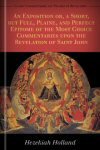
Hezekiah Holland provides a digest of post-Reformation treatments of the book of Revelation from a Puritan perspective. Holland summarizes the major views of scholars and explains the interpretative strategies of seventeenth-century commentators.
Hezekiah Holland (c. 1617–1660) was an Anglican priest with strong Puritan sympathies. He attended Trinity College after immigrating to England, and was known for engaging Baptists in debate. He wrote Adam’s Condition in Paradise Discovered.

Controversial but thorough, this exegetical commentary reviews Revelation verse by verse. Employing a historicist hermeneutic—the belief that most of the events of Revelation occurred in the apostolic era—Hanserd Knollys uses Revelation to support Baptist beliefs.
Hanserd Knollys (1599–1691) was a particular or Reformed Baptist minister. He was educated at St. Catharine’s College, Cambridge. Often controversial, and repeatedly accused of heresy, he solved the problem by starting his own Baptist church. In 1657 he successfully appealed to Oliver Cromwell for protection, and remained free to teach and practice his beliefs despite no formal law protecting religious freedom.
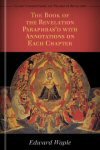
Attempting to draw specific historical and chronological connections to Revelation’s prophecies, Edward Waple’s book annotates Revelation to identify where its prophecies connect with history and how they point to the end times.
Edward Waple (1647–1712) was an Anglican priest, archdeacon of Taunton, and vicar of St. Sepulchre’s.
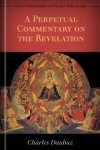
Holding a historicist view of Revelation, Charles Daubuz identifies where Revelation’s prophecies link with history. Daubuz draws on the significance of symbols in the ancient world, and utilizes his conclusions to argue for the lordship of Christ and the reality of God’s providence in history.
Charles Daubuz (1673–1717) was an Anglican priest and Calvinist theologian. The revocation of the Edict of Nantes—a decree which had granted tolerance to the Huguenots (French Calvinists)—caused him to flee France for England. He was educated at Queen’s College, Cambridge, and was vicar of Brotherton. He wrote A Symbolical Dictionary of the Prophetic Symbols and The Testimony of Flavius Josephus to Jesus Christ.
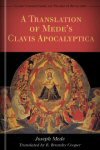
Purporting to hold the interpretive keys to the book of Revelation, Joseph Mede’s futurist commentary on Revelation was widely influential in the late seventeenth and early eighteenth centuries. It predicted the world would end by 1716, and—with slight modifications—inspired later generations to propose similar predictions.
Joseph Mede (1586–1639) was a naturalist, linguist, Egyptologist, and biblical scholar. He studied at Christ’s College, Cambridge. His work on Revelation garnered him great influence, though it is likely he intentionally refrained from publication because of his innovative ideas. These included the belief that demon possession was mental illness, and that Zechariah was written by multiple authors. His posthumous works include Book of Daniel, The Apostasy of Latter Times, and Doctrine of Demons.
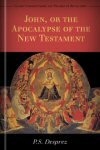
Written from the preterist perspective, this commentary explains the meaning of Revelation’s symbols within their historical context. Focused on explanation, P. S. Desprez presents each symbol in accessible language with an emphasis on clarifying John’s enigmatic book.
P. S. Desprez (1812–1879) was an Anglican clergyman and biblical scholar who specialized in prophecy. Desprez was educated at home, and obtained advanced schooling at College Green, Bristol, and later at Cambridge. He served as curate of St. George’s Church in London, and later became a popular preacher. He wrote The Apocalypse Fulfilled in the Consummation of the Mosaic Economy, Analogy between the Apocalypse of the Old Testament and That of the New, and Babylon the Great: Neither Rome Pagan, nor Papal, but Jerusalem.
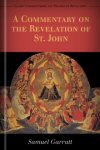
Placing the Reformation at the center of Christian history in the postapostolic era, Samuel Garrett’s commentary presents a comprehensive presentation of the premillennial historicist reading of Revelation. This is a mid-level exegetical commentary that confines references to Greek words and phrases to the footnotes.
Samuel Garratt was the vicar of St. Margaret’s Church, Ipswich, and canon of Norwich. He wrote The Eastern Horizon, The Discipline of Suffering, The Midnight Cry, and The Dawn of Life. He was educated at Cambridge, and kept detailed accounts of his life. His daughter, Evelyn Garratt, edited his diary and his memoirs, producing the Life and Personal Reflections of Samuel Garratt.
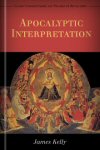
Refuting futurism, James Kelly argues for a historicist interpretation of Revelation, but also focuses on explaining a proper hermeneutical approach to the book. Though Kelly directly challenges futurist readings of the book, and demonstrates the extensive problems with attempting to make predictions, he looks forward to the second coming of Christ.
James Kelly was an Anglican priest and incumbent at St. George’s Church, Liverpool.
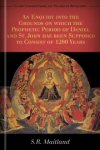
Many post-Reformation era biblical scholars believed that the Bible suggested a period of 1,260 years between the New Testament era and the end of time. In this volume, S. R. Maitland critically engages the methods that led to this conclusion, and proposes a new approach to end times chronology.
This title will download as two resources.
S. R. Maitland (1792–1866) was an Anglican priest, historian, lawyer, and editor. He was educated at St. John’s College, Cambridge, and was a fellow of the Royal Society. He wrote many books on a variety of topics, including An Attempt to Elucidate the Prophecies concerning Antichrist, Essays on Subjects Connected with the Reformation in England, and Superstition and Science: An Essay.
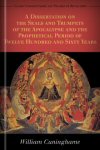
Zooming in on the symbols and visions of Revelation, William Cuninghame’s commentary attempts to decode Revelation and determine when the coming of the anti-Christ and the second coming of Christ will occur.
William Cuninghame (c. 1775–1849) was a Presbyterian minister and a primary instigator of the Church of Scotland’s Disruption of 1843. He was educated at the University of Utrecht, and worked for the East India Company. While living in India he was influenced by Baptist missionary William Carey. He wrote many books, including The Doctrine of the Millennial Advent and Reign of Messiah, A Synopsis of Chronology from the Era of Creation to 1837, and The Political Destiny of the Earth, as Revealed in the Bible.
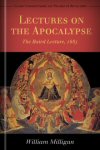
William Milligan’s lectures explore the unique interpretive challenges Revelation creates, explains the problems and prevalence of eccentric treatments, and provides a thorough structural analysis of John’s apocalypse.
William Milligan (1821–1893) was professor of divinity and biblical criticism at the University of Aberdeen. He was educated at the University of Halle in Germany and wrote several books, including The Resurrection of the Dead: An Exposition of 1 Corinthians 15, and The Words of the New Testament as Altered by Transmission and Ascertained by Modern Criticism: For Popular Use.
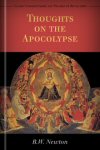
Arguing that Old Testament prophecies play a key role in interpreting Revelation, B. W. Newton’s work unpacks Revelation’s symbols and prophecies by focusing on their biblical context and by drawing on the use of symbolism in the ancient world.
B. W. Newton (1807–1899) was educated at Exeter College, Oxford. Newton was noted for his rejection of the Anglican Church and his a non-conformist views.
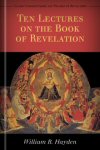
These insightful lectures cover the full spectrum of interpretive problems in Revelation. William Hayden proposes a unique approach to interpreting Revelation, explains symbols, and brings clarity to the book’s complicated chronology.
William B. Hayden (1816–1893) was minister of the New Jerusalem Church, Portland, Maine. He wrote On the Phenomena of Modern Spiritualism, Wine, as a Scripture Symbol: Baptism and the Holy Supper, Three Discourses, and Ten Chapters on Marriage: Its Nature, Uses, Duties, and Final Issues.
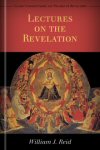
Writing from a strongly Protestant postmillennial perspective, William Reid provides an expository commentary that explains Revelation verse by verse. Recognizing a strong congruity between the history of the Roman Empire and the book of Revelation, Reid nonetheless maintains that John’s book points to future events.
William J. Reid (1834–1902) was pastor at First United Presbyterian Church in Pittsburgh and author of Blood of Jesus.
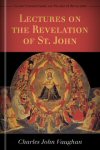
Treating select passages from the book of Revelation, Charles Vaughan explains some of those key passages while critically analyzing popular understandings of the symbols and events of each. Vaughan provides his own literal translation, and bases his commentary on the issues raised by the original Greek terms.
Charles John Vaughan (1816–1897) was an Anglican minister and dean of Llandaff Cathedral. He was educated at Rugby School and Cambridge, and was a fellow at Trinity College, Cambridge. He was elected president of University College, Cardiff, in 1894. Vaughan’s St. Paul’s Epistle to the Romans was the first commentary to utilize the Westcott-Hort New Testament. His other books include Voices of the Prophets: or Faith, Prayer, and Human Life, The Two Great Temptations. The Temptation of Man, and the Temptation of Christ: Lectures Delivered in the Temple Church, Lent 1872, and The Prayers of Jesus Christ: A Closing Series of Lent Lectures.
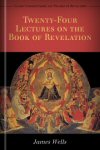
Utilizing the hermeneutic of “regula fidei” or “rule of faith,” James Wells explains the book of Revelation by drawing on other parts of Scripture—such as the “little apocalypse” of Matthew 24—in order to explain John’s enigmatic but powerful message.
James Wells (1838–1924) was a minister in the Free Church of Scotland, and served at Pollokshields West Church, Glasgow, for 38 years. He wrote Christ's Bible and the Newest Criticism, Bible Echoes: Addresses to the Young, and Rescuers and Rescued.
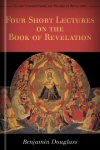
These lectures provide detailed introductions to the questions and issues found throughout Revelation. Each lecture covers one section of Revelation.
Benjamin Douglass was an author and biblical scholar.
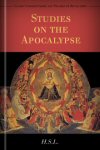
This topical commentary addresses the most controversial subjects of the book of Revelation. In separate vignettes, the author discusses the seven churches of Asia, the seals, trumpets, the millennial reign of Christ, and a host of other topics.
H. S. L. was a churchman and biblical scholar.
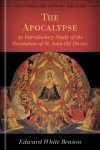
Focusing on hermeneutics and Revelation’s literary strategies, Edward Benson expounds methods for studying Revelation and for understanding its apocalyptic genre.
Edward White Benson (1829–1896) was the archbishop of Canterbury. He is best remembered for creating the Festival of Nine Lessons and Carrols, a Christmas Eve worship service used in churches around the world. He was educated at Trinity College, Cambridge, and wrote Cyprian, His Life, His Times, His Work and The Primate and Church Defense.
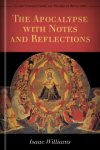
Succinct and accessible, this expository commentary unpacks Revelation phrase by phrase helping readers understand the book as an apocalyptic document tied to its own historical era and intimately related to other books of the Bible.
Isaac Williams (1802–1865) was an English vicar and prolific writer. He was a prominent member of the Oxford Movement. Also known as “Tractarians,” these high-church Anglicans saw the Anglican Church as a branch of the Catholic Church. Williams attended Trinity College, Oxford, where he was a disciple of John Keble. He was ordained in 1829, and became curate in Gloucestershire before returning to Oxford to assist John Henry Newman. He was a fellow and tutor at Oxford, and he wrote poetry and prose, including the influential tract On Reserve in Communicating Religious Knowledge.
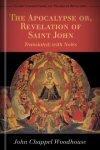
Combining critical evaluation of the biblical text with a polemic against competing perspectives, this commentary puts exegesis to work supporting a historicist perspective on Revelation.
John Chappel Woodhouse (1749–1833) was an Anglican divine and dean of Litchfield Cathedral. He was educated at Christ Church, Oxford, and wrote Annotations on the Apocalypse and A Short Account of Litchfield Cathedral.
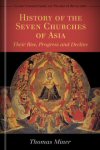
History of the Seven Churches of Asia; Their Rise, Progress, and Decline; with Notices of the Churches of Tralles, Magnesia, Colosse, Hierapolis, Lyons, and Vienne; Designed to Show the Fulfillment of Scripture Prophecy
- Author: Thomas Milner
- Publisher: Holdsworth and Ball
- Publication Date: 1832
- Pages: 388
Distinctly historical in character, this volume looks at Revelation’s seven churches of Asia through a geopolitical lens in order to better understand their relevance for Christian theology.
Thomas Milner (d. 1882) was a clergyman, biblical scholar, naturalist, and historian. He wrote The History of England: From the Invasions of Julius Caesar to the Year A. D. 1852, The Turkish Empire: The Sultans, the Territory, and the People, The Crimea: Its Ancient and Modern History, and The British Islands: Their Physical Geography and Natural History.
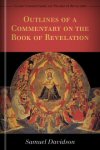
Determining the structure and flow of a biblical book is a key component for competent exegesis. In this short volume, Samuel Davidson outlines Revelation based on critical observations and comments on issues of authorship, provenance, and audience.
Samuel Davidson (1806–1898) was a Presbyterian minister and a professor of biblical criticism at the Royal College of Belfast. He wrote Sacred Hermeneutics Developed and Applied, The Hebrew Text of the Old Testament Revised, and The Canon of the Bible.
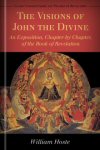
Focusing on Revelation’s message, William Hoste provides an exegetical commentary that illuminates the meaning of each chapter. He explains how the book’s sections relate to each other, and interacts with scholarly literature when it provides especially acute observations.
William Hoste was a minister and biblical scholar. He wrote Discipline in the House of God, Christ in Gethsemane: Some Theories of Our Lord's Agony, Examined in the Light of Scripture, and Mysteries of the New Testament.
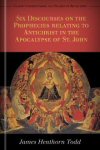
The identity and nature of the antichrist is one of the most controversial aspects of Revelation. In this volume, James Todd explores different theories on the anti-Christ’s identity and works through the major difficulties posed by Revelation’s enigmatic description of his role in the end times.
James Henthorn Todd (1805–1869) was regius professor of Hebrew at the University of Dublin and senior fellow of Trinity College. He was a noted librarian, teacher, and Irish historian.
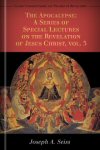
The Apocalypse: A Series of Special Lectures on the Revelation of Jesus Christ, vol. 3
- Author: Joseph A. Seiss
- Publisher: Charles C. Cook
- Publication Date: 1900
- Pages: 503
Believing that the character of Christ in Revelation is the key to the book’s interpretation, Joseph Seiss’ analyzes Revelation verse by verse and posits specific interpretations of its visions, symbols, and dates.
Joseph A. Seiss (1823–1904) was a Lutheran dispensational minister. He was a member of the Plymouth Brethren. In addition to being a pastor, he was also a prolific writer and editor. Seiss edited Prophetic Times and The Lutheran and wrote many books, including Last Times, Ecclesia Lutherana, Voices from Babylon, and Luther and the Reformation.
Looking for volumes 1 and 2 of Joseph Seiss’ lectures on Revelation?
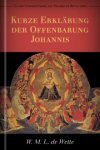
Written during the height of German literary criticism, this commentary examines John’s apocalypse from a technical perspective. It examines the book’s literary structure, linguistic choices, and historical context. This commentary is written in German.
W. M. L. de Wette (1780–1849) was a professor of theology at Heidelberg and at Friedrich Wilhelm University. He studied at Weimar and Jenna, and was heavily influenced by Johann Gottfried von Herder, Johann Jakob Griesbach, and Friedrich Schleiermacher. He wrote Kommentar über die Psalmen, Über Religion und Theologie, and Lehrbuch der Christlichen Dogmatik.
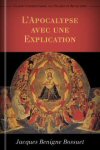
Drawing on the Greek text, Jacques Bossuet’s commentary highlights the rhetorical impact of the book while emphasizing its practical applications. This commentary is written in French.
Jacques Benigne Bossuet (1627–1704) was a master orator and accomplished French language stylist. He was the court preacher to Louis XIV of France, and is widely considered one of the most influential homiliticians who has ever lived. He strongly defended the divine right of kings, successfully debated philosophers and Protestants, and wrote many books, including Instructions Pastorales pour les Protestants, Défense de la Tradition et des Saints Pères , and Maximes et Réflexions sur la Comédie.
Reviews
0 ratings
Timothy J. Huckabay
6/3/2017
It would be helpful if Logos would provide a timeframe for this; I bid on it more than two years ago, and still nothing....Daniel Andujar
9/5/2016
I hope more people bid for this collection. This is a must have for those who are highly interested in prophecy! I can't wait! :>